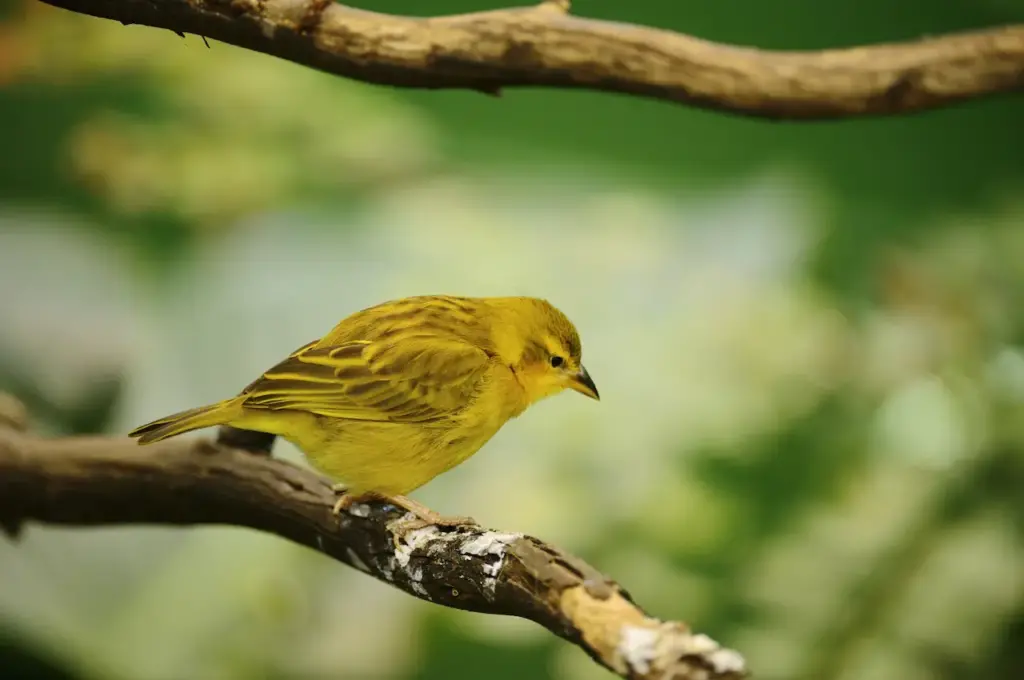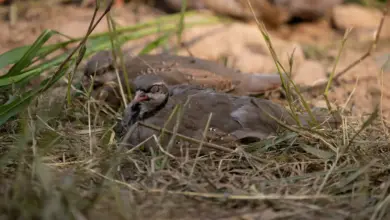Taveta Golden Weavers
Taveta Golden Weavers
Weaver Species
The Taveta Weavers (Ploceus castaneiceps), also known as the Taveta Golden Weavers, are endemic to Africa, where they can be found in riverine scrub areas of coastal East Africa from north-eastern Tanzania ranging to extreme south-eastern Keya. There are also some records of them in Asia.
These social birds often occur in large groups, or colonies, and are fairly common within their natural range.
Their preferred breeding territories are wetland areas (marshes, swamps, peatlands and riparian areas), and outside the breeding season, they favor drier habitats, such as open woodland, forests, dry savannas, and shrubland.
Their lifespan is about 20 years.

Description:
These weavers are small birds, about the size of finches. They stand ~ 5.5 inches tall and weigh between 0.6-0.8 ounces. Both males and females have dark eyes and beaks.
Male: The breeding plumage is mostly a bright yellow color, greenish-yellow on the back. The tail and the wings are greenish. The back of the head is reddish and there are darker orange patches on the chest.
Female: Plumage is a duller yellowish-olive color with paler streaks along the back and a pale buffy-yellow plumage below. There is a yellowish stripe above each eye.
Similar Birds:
- Golden Palm Weaver, but not found within their range.
- Holub’s and African Golden-Weavers: Similar plumage details, but can Tavetas can be identified by their black eyes.
Calls / Vocalizations:
Their calls are described as a dry rattling sound.
Diet / Feeding:
Their short and thick bills are perfect for cracking and opening seeds, which constitute an important part of their diet. Additionally, they will feed on corn and grasses, and will also hunt live prey (mostly insects) – especially when raising young.
Breeding / Nesting:
Most breeding occurs from September through May. Male Taveta Golden Weavers are assumed to be polygynous (=mating with several females). The males will build elaborate oval nests to attract females. The quality of their nests are important factors for females when choosing to mate with them. Once a mate, and a nest, is chosen, she will line the nest with grasses and other soft material to get it ready for the young.
A clutch generally consists of two to three glossy olive-green eggs. The incubation period is about 13 days. The young fledge when they are about 14 to 16 days old.

Global Names:
- Catalan: teixidor de Taveta
- Chinese: 栗头金织雀 / 栗頭金織布鳥
- Croatian: riđoglava pletilja
- Czech: snovač východoafrický
- Danish: Tavetavæver
- Dutch: Tavetawever
- German: Tavetaweber
- Finnish: leirikutoja
- French: Tisserin de Taveta
- Italian: Tessitore dorato di Taveta
- Japanese: chaerihataori / チャエリハタオリ
- Lithuanian: Geltonasis audėjas
- Norwegian: Tavetavevar / Tavetavever
- Polish: wikłacz rdzawogłowy
- Portuguese: Tecelão-dourado-de-cabeça-castanha
- Russian: Рыжелицый ткач
- Slovak: pletiarka lemová
- Serbian: Ogrličasta tekstor tkalja
- Spanish: Tejedor Taveta
- Swedish: tavetavävare
- Ukrainian: Ткачик рудоголовий
Please Note: The articles or images on this page are the sole property of the authors or photographers. Please contact them directly with respect to any copyright or licensing questions. Thank you.


